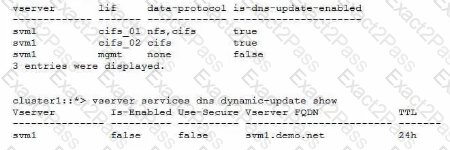Last Update 2 hours ago Total Questions : 60
The NetApp Certified Support Engineer ONTAP Specialist content is now fully updated, with all current exam questions added 2 hours ago. Deciding to include NS0-593 practice exam questions in your study plan goes far beyond basic test preparation.
You'll find that our NS0-593 exam questions frequently feature detailed scenarios and practical problem-solving exercises that directly mirror industry challenges. Engaging with these NS0-593 sample sets allows you to effectively manage your time and pace yourself, giving you the ability to finish any NetApp Certified Support Engineer ONTAP Specialist practice test comfortably within the allotted time.
You recently discovered the error message shown below in your ONTAP logs.

What should be your first action to correct this Issue?
You are optimizing your Cloud Volumes ONTAP. For interoperability and consolidation purposes, you need to know the storage limits.
In this scenario, which source should be reviewed?
A customer reports that some of their client computers are unable to access a FlexGroup over CIFS. This problem involves only their older Windows XP clients and some printers and scanners.
In this scenario, which statement Is correct?
You receive the "Unable to connect to the management gateway server" error when trying to connect to a node management IP.
In this situation, how do you determine whether core dumps are generated for the mgwd user space process?
Your customer Informs you about SnapMlrror problems after upgrading NetApp ONTAP software to a newer version. After investigating the event logs and the SnapMirror history, you see information about delayed updates of the SnapMirror relationships.
How would your customer prevent such problems in the future?
Recently, a CIFS SVM was deployed and is working. The customer wants to use the Dynamic DNS (DDNS) capability available in NetApp ONTAP to easily advertise bothdata UFs to their clients. Currently. DNS is only responding with one data LIF. DDNS is enabled on the domain controllers.

Referring to the exhibit, which two actions should be performed to enable DDNS updates to work? (Choose two.)
You have a customer complaining of long build times from their NetApp ONTAP-based datastores. They provided you packet traces from the controller and client. Analysis of these traces shows an average service response time of 1 ms. QoS output confirms the same. The client traces are reporting an average of 15 ms in the same time period.
In this situation, what would be your next step?

